The 10 Most Traveled Bridges in Texas in Desperately Poor Condition
Bridges are important aspects of the United States transportation system. Bridges allow passengers to safely cross over waterways, railways, and busy highways. They are also important for connecting major cities to more rural areas.
The Texas Department of Transportation estimates that Texas has more than 55,000 bridges with vehicular traffic. This is about 28,000 bridges more than any other state in the U.S. Texas’s bridge total is also more than the combination of 17 other states. Texas also has 33 bridges connecting to Mexico, making them important for international travel. Commute times also have increased in Texas by 11.4%
Texas drivers on average pay an estimated $709 per year in costs caused by roads in need of repair. While Texas has the most bridges in the country, it also has the smallest percentage of structurally deficient bridges of any state—slightly behind Nevada—at 1.3%. However, it ranks 21 out of the 50 states, the District of Colombia, and Puerto Rico for the number of structurally deficient bridges. This contrast is likely due to Texas being the largest state in the contiguous U.S.
What Does Structurally Deficient Mean?
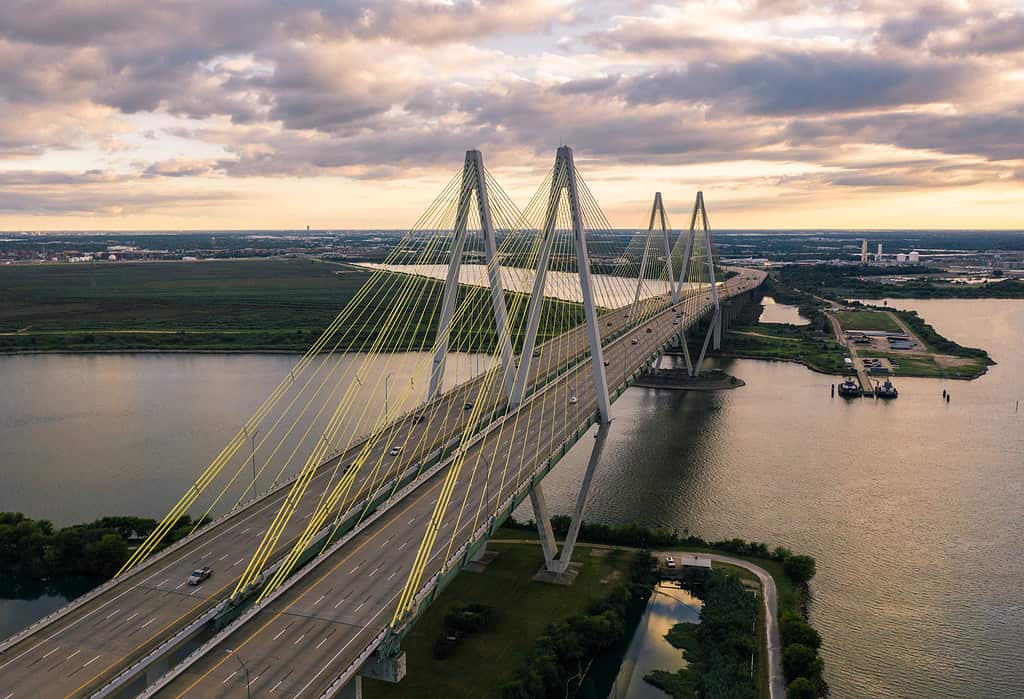
©Lifted Up Aerial Photography/Shutterstock.com
The Federal Highway Administration changed the definition of structurally deficient in 2018. Before, structural deficiency meant a bridge met one of two conditions. The first is that one of the key structural elements of the bridge—the deck, superstructure, substructure, or culverts—is classified as in poor or worse condition. The second is that the bridge has a structural condition or waterway adequacy rating of less than 2 on a 10-point scale. However, the FHWA removed this second benchmark as an indicator of a bridge’s status.
During inspection, multiple elements of each bridge fall on a scale of 0 to 9. Failed bridges have a condition rating of zero, while excellent bridges have a condition rating of 10. A rating of 4 and below is considered poor condition, or structurally deficient.
Condition levels fall under the following definitions, according to the FHWA.
Good Condition: This includes bridges with a rating of seven and above. These bridges have little to no signs of deterioration.
Fair Condition: This includes bridges with a minimum rating of five or six. These bridges have minor to moderate deterioration. They could benefit from maintenance or repair, but it is not an immediate need.
Poor Condition: This includes bridges with four or below. These bridges have advanced signs of deterioration. They need repair, rehabilitation, or replacement.
A deteriorating bridge doesn’t necessarily mean it’s an immediate danger. If the bridge is safe enough for traffic to continue, then it will stay open for travel. However, any bridge deemed unsafe by TxDOT is immediately closed to the public.
State of Texas Infrastructure
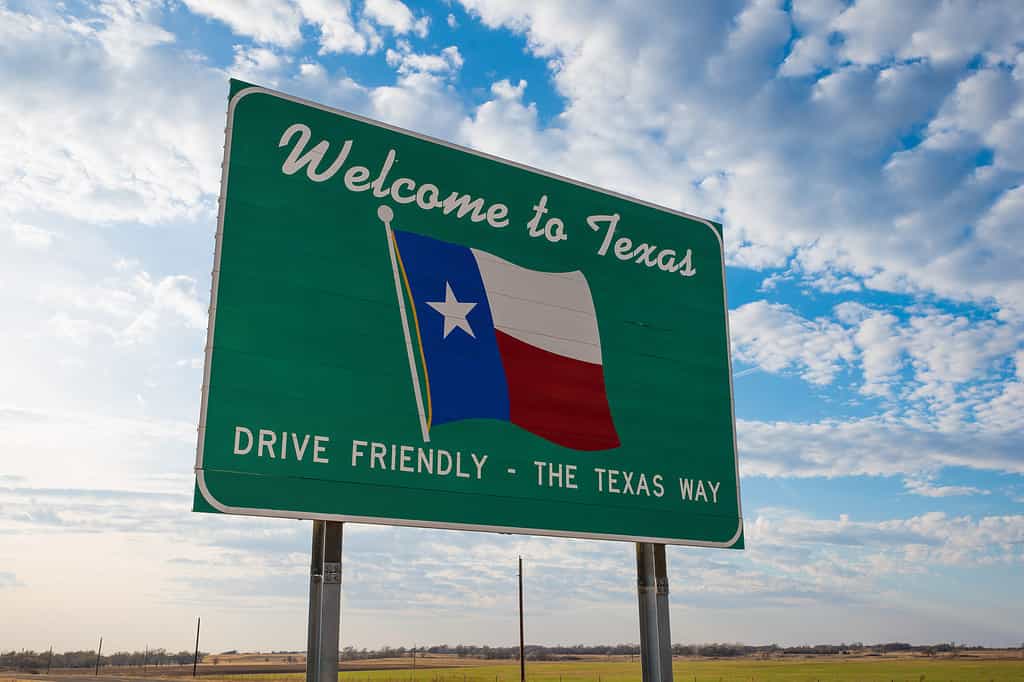
©Janece Flippo/Shutterstock.com
According to the U.S. Department of Transportation, infrastructure in Texas has suffered from a systemic lack of investment. As of 2021, Texas has an overall C rating on its infrastructure report card from the American Society of Civil Engineers. While Texas has a B- rating in bridges, there is always room for improvement.
According to the report card, Texas claims more than 11,000 of its 56,000-plus bridges need repairs. However, only 708 of these bridges, or 1.3% of the state’s total, are structurally deficient. This is a slight decrease from 2019 when 725 were classified as structurally deficient.
State Funding for Texas Infrastructure
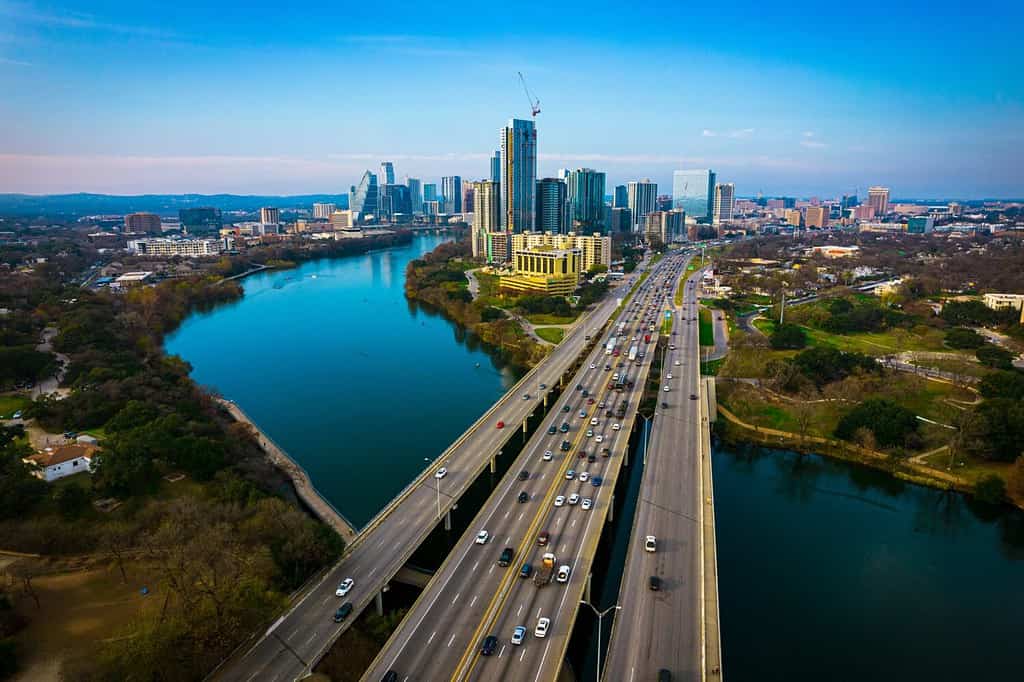
©Roschetzky Photography/Shutterstock.com
In the last decade, a majority of Texas voters approved two important ballot measures that created constitutional amendments for the state’s transportation funding.
Proposition 1, approved in 2014, allows the transfer of a portion of Texas’s severance taxes to its state highway fund. This transfer aims to assist in the completion of transportation construction, maintenance, and rehabilitation projects. Originally set to conclude at the end of next year, in 2019 the Texas Legislature chose to extend the proposition’s expiration date to the end of 2034.
In 2015, Proposition 7 passed. This amendment allows a portion of state sales and use taxes to go towards the construction, maintenance, or acquirement of rights of way for public roadways—excluding toll roads. Proposition 7 expires at the end of the 2029 fiscal year.
Federal Funding for Texas Infrastructure
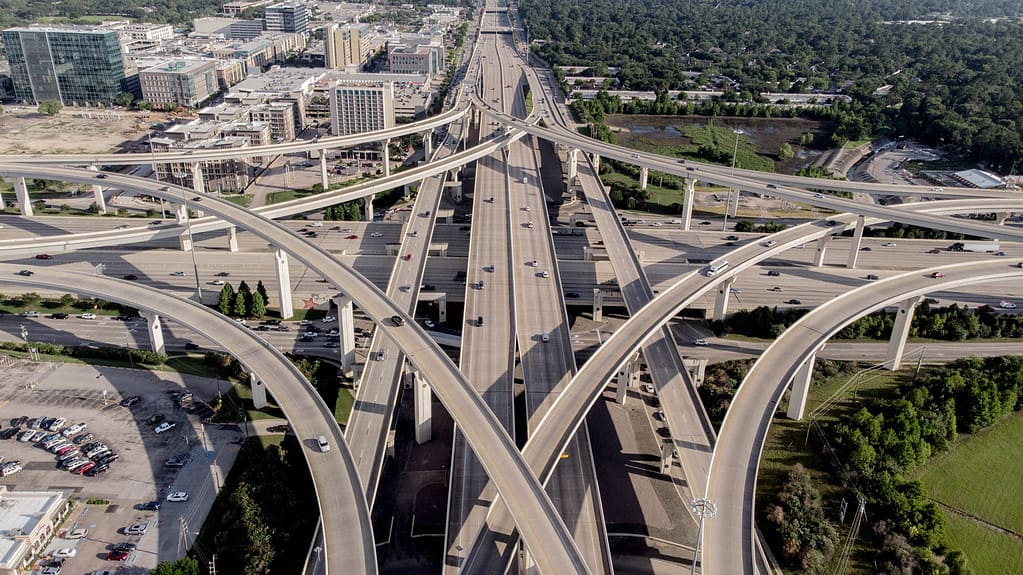
©omarhasan1/Shutterstock.com
President Biden signed the Infrastructure Investment and Jobs Act (IIJA), also known as the Bipartisan Infrastructure Law (BIL) into law on November 15, 2021.
According to a guidebook for the Bipartisan Infrastructure Law provided by The White House, the BIL is the largest long-term investment in infrastructure and economy in United States history. The bill is a continuation of the National Highway Performance Program and reauthorizes federal surface transportation programs through the 2026 fiscal year. It also allows the government to invest a total of $400 billion over the bill’s duration for transportation projects.
$40 billion of the bill’s funds will go towards the replacement, rehabilitation, preservation, and construction of bridges throughout the nation. The U.S. Department of Transportation reports that this is the single largest dedicated bridge investment since the construction of the interstate highway system.
According to the American Road & Transportation Builders Association, over the life of the BIL, Texas will receive a total of $576.8 million in bridge formula funds to help with necessary repairs. The state currently has access to more than $230 million of that total. As of June 2023, the state has committed $178.8 million to 88 bridge projects.
Texas Bridges Going Forward
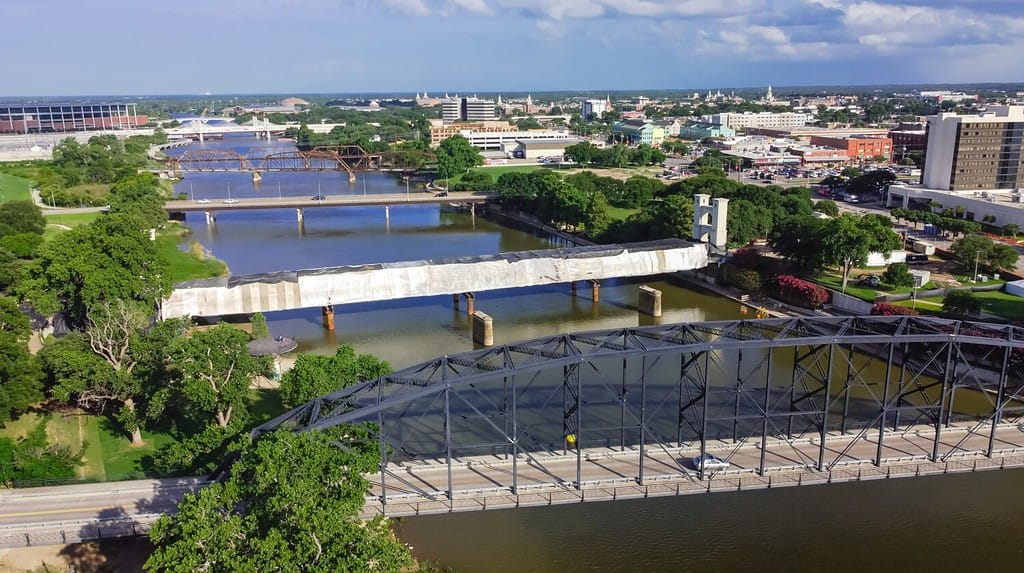
©Trong Nguyen/Shutterstock.com
It is estimated that $3.6 billion in funding is needed annually to keep Texas’s bridges and culverts in good standing, as well as to accommodate the state’s growth through the rest of the decade. $18 billion is also required over the same period to erase the backlog of deficient bridges.
As of 2023, Texas has received federal grants for 145 projects through the Bipartisan Infrastructure Law. Though the grants cover a wide range of transit projects across the state, there are a number that include bridge improvements.
Top Most Traveled Structurally Deficient Bridges in Texas
The following are all urban interstate bridges, ranked by the greatest number of daily crossings to the least. Please note: Both the northbound and southbound sides of I-45 in Harris County have the same statistics, but are classified as separate bridges by the Texas Department of Transportation.
| Daily Crossings | Location | County | Year Built |
|---|---|---|---|
| 194,462 | IH 35E over Oak Lawn Ave & Turtle Ck | Dallas | 1959 |
| 187,570 | IH 610 over FM 521 & BNSF RR | Harris | 1966 |
| 141,993 | IH 30 over Lake Ray Hubbard | Dallas | 1995 |
| 138,390 | IH45 NB Conn Cover IH30 | Dallas | 1961 |
| 116,204 | IH 45 SB over Crosstimbers St | Harris | 1960 |
| 116,204 | IH 45 NB over Crosstimbers St | Harris | 1960 |
| 89,604 | IH 10 over 11th St | Jefferson | 1958 |
| 82,077 | IH 30 over East Fork Trinity River | Rockwell | 1995 |
| 81,504 | IH 30 WBml over IH 635 | Dallas | 1971 |
| 76,110 | IH 635 EB over KCS RR | Dallas | 1967 |
The photo featured at the top of this post is © Bob Pool/Shutterstock.com









